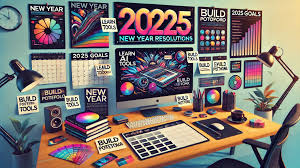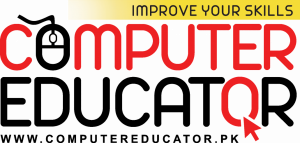Step-by-Step Guide to Graphic Design Skills for Beginners
Graphic design is a highly creative field that merges art and technology to communicate ideas. As a beginner, diving into the world of graphic design might seem overwhelming at first. But don’t worry! With the right tools, techniques, and mindset, you can develop solid graphic design skills. Whether you want to create visuals for personal projects, enhance your business, or pursue a career in design, this step-by-step guide will help you get started.

1. Understanding Graphic Design Basics
Before you dive into design software, it’s essential to understand the basic principles of graphic design. These include:
- Balance: The distribution of visual weight in a design. Balance can be symmetrical, asymmetrical, or radial, and helps create harmony in a design.
- Contrast: The difference between elements in a design, such as color, size, or shape. Contrast helps to emphasize important elements and makes designs visually engaging.
- Alignment: The arrangement of elements in a design in a straight line or a proper relationship to each other. Proper alignment creates a sense of order and structure.
- Repetition: Using the same visual elements multiple times in a design to create unity and consistency.
- Proximity: Grouping related items together. This helps in organizing the content and improving clarity.
- Color Theory: Understanding how colors interact, complement each other, and influence emotions. Familiarizing yourself with color palettes will help make your designs visually appealing.
2. Choosing the Right Tools
Graphic design requires software tools to bring your creative ideas to life. As a beginner, you don’t need to invest in expensive tools right away. Start with these popular and beginner-friendly programs:
- Canva: A simple, drag-and-drop design tool suitable for non-designers. It offers a wide range of templates, making it ideal for creating social media posts, presentations, and simple graphics.
- Adobe Photoshop: Industry-standard software for photo editing, digital painting, and raster-based design. Photoshop is highly versatile and widely used by professionals.
- Adobe Illustrator: The go-to program for vector-based designs. Illustrator is used for creating logos, icons, and illustrations that can be scaled without losing quality.
- GIMP: A free, open-source alternative to Photoshop. While it might take some time to get used to, GIMP is a great option if you’re just starting out on a budget.
Choose one tool and focus on mastering it before exploring others. As a beginner, learning the software thoroughly will help you become more efficient and confident in your design process.
3. Learn the Design Process
Every successful graphic designer follows a process. Here’s a general outline of the steps involved:
- Research: Understand the project’s goals, target audience, and the message you want to communicate. Research trends, competitor designs, and any necessary resources like images or fonts.
- Conceptualization: Sketch out ideas, experiment with shapes and layouts, and gather inspiration from other designers or design websites like Dribbble, Behance, or Pinterest.
- Designing: Using your chosen software, begin creating your design by building layers, adding text, and choosing color schemes. Focus on arranging elements in a way that’s visually pleasing and easy to understand.
- Feedback: Share your design with others, preferably someone with design experience, and ask for feedback. Constructive criticism can help refine your design and improve your skills.
- Revision: Based on the feedback, make the necessary adjustments to your design. Experiment with different variations until you find the best one.
- Finalization: Once you’re happy with your design, prepare it for the intended platform (print, web, or social media). Ensure that the dimensions and resolution are optimized for the best quality.
4. Building Key Graphic Design Skills
To succeed as a graphic designer, you need to develop the following skills:
- Typography: Typography is the art of arranging type in a visually appealing and readable manner. Learn how to use fonts effectively, and understand how font pairing works to create harmony in your designs.
- Color Theory: Understanding the psychological impact of colors is crucial. For example, blue is often associated with trust, while red conveys energy and passion. Experiment with different color combinations to evoke specific emotions or moods.
- Composition and Layout: How you arrange text, images, and other elements is fundamental to a good design. Practice the use of grids, margins, and white space to create clean, organized designs.
- Image Editing: Learning how to manipulate images is crucial for creating polished designs. This includes cropping, resizing, adjusting brightness and contrast, and removing unwanted elements.
- Vector Art: Mastering vector graphics will enable you to create scalable designs like logos and icons. Learn to use tools like the Pen tool and basic shape tools in Illustrator to craft your own designs.
- Web Design: While graphic design often focuses on print and digital materials, web design skills are highly valuable. Familiarize yourself with basic HTML/CSS and design layouts that are both functional and aesthetically pleasing for websites.
5. Building a Portfolio
A portfolio is essential for showcasing your work and attracting potential clients or employers. As a beginner, start by creating a few sample projects, even if they are hypothetical or personal. When assembling your portfolio, follow these tips:
- Show a Range of Work: Include a variety of designs, such as logos, business cards, posters, and social media graphics, to demonstrate your versatility.
- Showcase Process: Include before-and-after images to show your design process. This will help potential clients understand your problem-solving skills.
- Keep It Simple: Focus on quality over quantity. A well-curated portfolio with only your best work will have a greater impact than a large collection of mediocre designs.
- Update Regularly: As you improve your skills, update your portfolio to reflect your growth and current capabilities.
6. Keep Practicing and Learning
Graphic design is a field that requires continuous learning. Technology, trends, and design standards are always evolving, so it’s important to stay up to date. Here are some ways to improve your skills:
- Take Online Courses: Websites like Skillshare, Coursera, and Udemy offer great courses for beginners in graphic design.
- Follow Design Blogs: Subscribe to blogs like Smashing Magazine, CreativeBloq, or Designmodo to stay on top of the latest trends and techniques.
- Practice Regularly: The more you practice, the better you’ll become. Set aside time each day or week to create something new and experiment with different styles and techniques.
- Join Design Communities: Platforms like Behance, Dribbble, and Reddit’s design subreddits are great places to connect with other designers, share your work, and receive feedback.
7. Explore Freelance Opportunities
Once you feel confident in your design abilities, you can start looking for freelance opportunities. Websites like Upwork, Fiverr, and 99designs are great platforms for beginners to find clients and build a reputation. Start by offering affordable rates to attract initial clients, and gradually increase your pricing as you gain experience and positive reviews.
Conclusion
Graphic design is an exciting and rewarding field that offers endless creative opportunities. By following this step-by-step guide, you can build a solid foundation of design skills and embark on your creative journey. Remember that practice and persistence are key to becoming a successful graphic designer. Keep learning, experimenting, and refining your techniques to continuously improve and develop your unique style. Happy designing!
